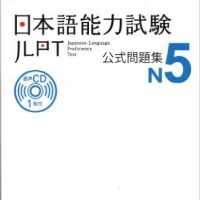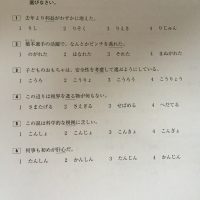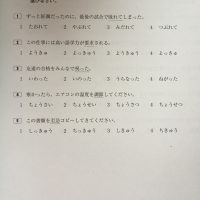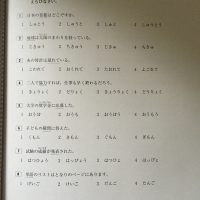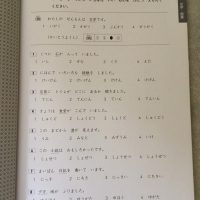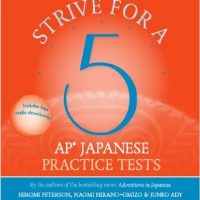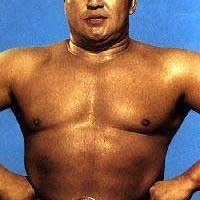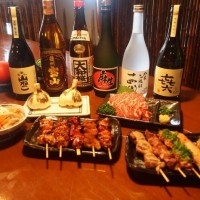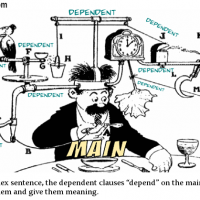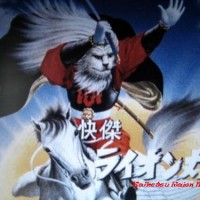blog
Monday: JLPT (Japanese-Language Proficiency Test) N5
08/16/2016 blog
もんだい 1 ___の ことばは ひらがなで どう かきますか。 1・2・3・4から いちばん いい ものを ひとつ えらんで ください。 (れい)大きな えが あります。 おおきな 2. おきな 3. だいきな 4. たいきな (こたえ)1. おおきな Let’s begin! Q.1 先週 デパートに かいものに いきました。 1. せんしゅ 2. せんしゅう 3. ぜんしゅ 4. ぜんしゅう Q.2 ごはんの 後で さんぽします。 1.つぎ 2. うしろ 3. まえ 4. あと Q.3 もう いちど 言って ください。 1. いって 2. きって 3. まって 4. たって Q.4 ちかくに 山が あります。 1. かわ 2. やま 3. いけ 4. うみ Q。5 この ホテルは へやが 多いです。 1. すくない 2. おおい 3. せまい 4. ひろい Q. 6 ともだちと いっしょに 学校に いきます。 1. がこう 2. がこお 3. がっこう 4. がっこお Q.7 えんぴつが 六本 あります。 1. ろくぼん 2. ろくぽん 3. ろっぼん 4. ろっぽん Q.8 この 新聞は いくらですか。 1. しんむん 2. しんぶん 3. しむん 4. しぶん Q.9 この カメラは 安いです。 1. たかい 2. やすい 3. おもい 4. かるい Q.10 かさは 外に あります。 1.いえ 2. なか 3. そと 4. にわ Request Free PDF @ https://JapaneseExperts.net! See you tomorrow with N4 (slightly higher level than N5)!
New Video Blogs Start Today!
08/15/2016 blog
I will start video blogs, which are dedicated to homeschoolers and students, who are anxious to get in Japanese colleges in order to get degrees over there and who want to land on their dream jobs with their Japanese skills. Each blog covers ‘Grammar,’ ‘Listening,’ and ‘Reading,’ so it will help you to get satisfactory results in most required tests to reach your goals. “AP JAPANESE PRACTICE TESTS” is sometimes used because they are easily available online or any physical stores like Barnes & Noble (new or used). On the other hand, especially in my video blogs, I will use test prep books for *JLPT (Japanese-Language Proficiency Test), which come with …
Friday: Japanese Hero
02/03/2016 blog
Rikidozan (Momota Mitsuhiro) <https://en.wikipedia.org/wiki/Rikid%C5%8Dzan> (“Father of the Professional Wrestling”) His name “Rikidozan” comes from his own Shikona (https://en.wikipedia.org/wiki/Shikona). He used to be a professional Sumo wrestler before he got involved in professional wrestling world. Just before he was about to be promoted to Ozeki (https://en.wikipedia.org/wiki/Makuuchi#.C5.8Czeki), however, he quit Sumo business. He moved on as an average business person. It didn’t take long before Rikidozan got involved in Professional Wrestling Business. He promoted himself and traveled all around. His popularity grew day by day – even more as a professional wrestler, rather than a Sumo wrestler. Giant Baba (https://en.wikipedia.org/wiki/Giant_Baba) and Antonio Inoki (https://en.wikipedia.org/wiki/Antonio_Inoki) were his disciples, recruited by Rikidozan. (Antonio Inoki) Treated …
Thursday: Japanese Food
01/30/2016 blog
Yakitori/Japanese Skewered Chiken (https://en.wikipedia.org/wiki/Yakitori) (Sake goes well with Yakitori) (Still Beer Wins!) Yakitori is a simple skewered chiken. It is grilled with special sauce made with soy sauce or just with salt/pepper. Although this is a grilled and skewered chicken, its preparation takes long. As a result, men tend to stop by at the Yakitori Bar or buy some from a specialty Yakitori shops in Japan. (A Variety of Yakitori) Even in this technology age, Yakitori, which has conspicuous flavor, is extremely popular. You know why, don’t you? Yakitori makes me miss Japan a lot! Why don’t you come with ME when I go back to Japan next time? …
Wednesday: Japanese Manga
01/30/2016 blog
Ganbare!! Robocon (https://en.wikipedia.org/wiki/Ganbare!!_Robocon) <Characters Created by Ishi(no)mori Shotaro, Father of “Kamen Rider”> (TV Version) (With His Idol – Robin) Robocon is a Grade-G robot (Grade-A, B, C, ………G!?). He cannot live without making mistakes – really serious mistakes. Every single day he is messed up! Still, he is loved by everybody because he has got a good heart. This is a big discrepancy in people’s mind – “Robots are cold (because they are machine!) while humans are warm (because blood is circulating in their bodies!).” There are, however, not all humans are warmhearted in reality, as you may know it very well. And here – there were warmhearted robots! That …
Tuesday: Japanese Proverb
01/27/2016 blog
Kodomo-wa Shojikida (= Children and fools speak truth [cannot lie].) (You know this fable, don’t you?) In this modern days, not all children are innocent, unfortunately. Still, there are lots of innocent kids left in this wide world. So precious! My kids are not always honest with me, either. However, I can consult them when I find it difficult to judge something or someone from time to time. They can speak truth by nature, which we adult cannot help admiring. There used to be a genius comedian named Fujiyama Kanbi (1929 – 1990). There was no actor who could play the role of a fool as well as Fujiyama. When he played …
Monday: One Point Japanese Clinic
01/26/2016 blog
How To Use Conjunctions (6) (https://en.wikipedia.org/wiki/Conjunction_(grammar)#Subordinating_conjunctions) (Get a picture?) (Red parts are main clauses!) (This is possible, too!) Today’s topic is ‘Node.’ As usual, I would use Japanese Grammar (Keiko Uesawa Chevray & Tomiko Kuwahira, The McGraw-Hill Company Inc., 2011) as a reference. Node The “node” clause refers to a “cause” or a “reason” for the statement of the main clause. Since “node” is used in an objective statement, the subjective expression, such as “- mashoo (=let’s -),” “- te kudasai (= please do -),” and so on, does not take place in the main clause, while “kara” allows those subjective expressions in the main clause. (Japanese Grammar) …
Friday: Japanese Hero
01/25/2016 blog
Miyamoto Musashi (https://en.wikipedia.org/wiki/Miyamoto_Musashi) (Who would have imagined that Musashi would be this famous when young?) Musashi (武蔵) can be read ‘Takezo.’ ‘Takezo’ sounds like he is a little brat, which was really true – actually he was worse than that. In his neighborhood, Takezo was regarded as a cancer to the community. Rough and violent. No intelligence of any kind. Nobody liked him. What, in the world, transformed Takezo into Musashi, who became a worldly famous swordsman for the next centuries. It was Buddhist education that was given by his uncle and aunt, who raised him since he was 7 years old. Yoshikawa Eiji (https://en.wikipedia.org/wiki/Eiji_Yoshikawa), the notable Japanese author, wrote a …
Thursday: Japanese Food
01/25/2016 blog
Motsunabe (https://en.wikipedia.org/wiki/Motsunabe) (Motsunabe: Another Kind of Nabemono: https://en.wikipedia.org/wiki/Nabemono) The roots of Motsunabe dates back to post World War II perios, when Korean coal miners (temporary immigrant workers) started to cook this kind of nabemono in Hakata, Fukuoka, in Japan. You cannot exactly say this is Hakata’s local cuisine because it was not until 1992 that Motsunabe became very popular in Tokyo, Japan, after the Economic Bubbles burst. Ingredients are beef or pork tripe or other offal. That’s why this nabemono cost a lot less! Economy and efficiency! To eliminate the tripe or offal smell, green onions (scallions) or garlic chives are used most frequently. Because of the significant Korean influence, …
Wednesday: Japanese Manga
01/21/2016 blog
Kaiketsu Raion Maru (Lion-Maru) (https://en.wikipedia.org/wiki/Kaiketsu_Lion-Maru) (The original Manga Version) (TV Version (54 episodes): https://youtu.be/lo6DyikmlzQ) “Raion Maru” was cool when TV series started. This is categorized as Jidaigeki (https://en.wikipedia.org/wiki/Jidaigeki) and the hero of this TV drama is a Ninja (https://en.wikipedia.org/wiki/Ninja). The time is Sengoku Jidai (https://en.wikipedia.org/wiki/Sengoku_period). Like “Kamen Rider,” which was featured in my blog previously, Shishi (= Lion) Maru, the Hero Ninja, transforms into “Raion Maru.” Japanese kids in 70’s were simply hooked! (Shishi Maru shouts, “Kazeyo (= Wind)! Hikariyo (=Light)! Henshin (= Transform)!”) Transformation! That’s the key to SUCCESS in learning LANGUAGES! I will help YOU to transform into A JAPANESE PERSON! Special Trial Lesson $19.99 <–Click here!

